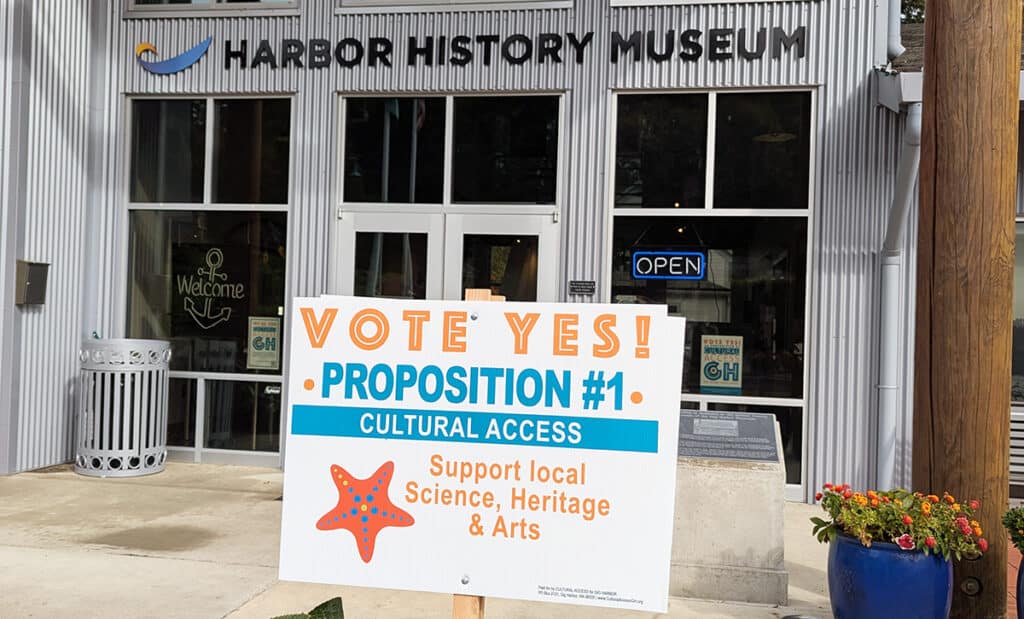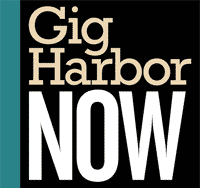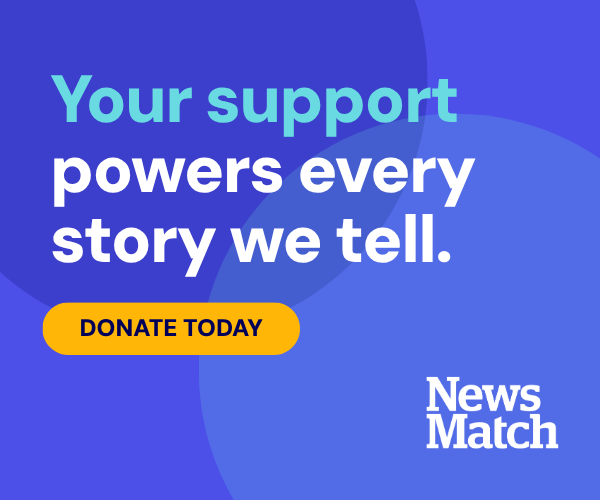Arts & Entertainment Community Government
Cultural access proposal allows city voters to decide on tax to support nonprofits
Gig Harbor’s arts, science and history-focused organizations could see a $1.2 million boost if city residents vote for it.
The Gig Harbor City Council placed a Cultural Access tax proposal on November’s ballot and subsequently endorsed it. The proposal would add a 0.1% percent tax increase to goods or services sold within the city limits. A majority of that money would support educational programming. For instance, something that costs $10 would have a 1-cent tax added to it. The tax wouldn’t apply to groceries.
Funding challenges
Harbor History Museum Director Stephanie Lile, who also headed the group that wrote the voter’s guide statement in favor of the tax, said in an email that cultural organizations are reeling from recent federal funding cuts. In addition, a 2017 law that changed standard deductions for charitable giving had a negative ripple effect on nonprofits throughout the United States.

Signs posted in front of the Harbor History Museum urge a yes vote on the cultural access proposition. Photo by Vince Dice
The law made it less beneficial for people to give to charities and created a steep drop in charitable giving.
“With the most recent big bill making that a permanent deduction, charitable giving for the average person not only dropped by an average of $880 per year, the incentive to give to nonprofits for the tax benefit diminished exponentially unless you’re at the high end of the income scale,” Lile explained. “Cultural Access is still a bargain even if every household ‘gave back’ $25 a year of the $880 saved to help support the organizations that make people proud to live here. The alternative is that the nonprofits close or significantly cut back.”
She also emphasized that the city neither owns nor funds the museum. Grants, donations and earned income fund the museum — and still, “we squeak by,” she said.
“And we’re not alone. Other organizations, especially those with paid professional staff, just barely get by,” she continued. “But we do it because we believe in the work and in making our community a better, safer, smarter and more creative place to live.”
Benefits to community
Lile said the state law that allows municipalities to float such a tax requires organizations that receive the benefits to demonstrate a public benefit through their programming. These benefits extend beyond city borders, too. Anyone, whether or not they live in the city, may participate in Gig Harbor’s programming.
This can mean things like free or reduced-rate events, performances, exhibits, presentations and more, Lile said. It can also provide basic operating funds to support free museum days and historic preservation efforts.
“For performing arts groups this can mean more access to public performances or providing instruments to those who can’t afford to rent or buy them,” she said. “It could mean subsidized summer camps and engaging senior programs. It can also mean transportation funding for low-income schools that would otherwise not be able to attend a field trip or performance.”
Economic benefits
For nonprofits, the tax revenue could support existing jobs and create new ones. This is especially important, Lile said, in Gig Harbor’s expensive community, where pay does not cover the cost of living.
“Having a business model that is reliant on staff having partners or parents who earn enough to support them (because their job doesn’t) is simply not sustainable in the long term,” Lile said. “You wouldn’t run a hotel with volunteer housekeepers or go to a legal firm to seek the advice of someone with no law degree.”
She also pointed out that the tax would support other local businesses, thereby allowing the support and creation of even more jobs. She said that a calculator provided by Americans for the Arts showed that “year-round anchor organizations such as Harbor WildWatch, Harbor History Museum, and Gig Harbor BoatShop already generate over $1.5 million that goes right back to our community via dollars spent by visitors.”
“These dollars go to restaurants, shops, and lodging which all provide local jobs. If cultural organizations thrive, so do local businesses. Additional organization funds go to local services and maintenance vendors who also provide jobs,” she continued. “A recent study showed that Tacoma’s economic vitality rating was [significantly] greater than other cities of similar size and the only factor they could attribute it to was Cultural Access.
Arguments against
Not everyone supports the tax.
Jim Franich, who wrote the opposition statement for the voter’s guide, said that while he supports funding the arts, he doesn’t want a regressive tax to go into effect on any purchase, including essentials.
“It takes a larger share from those with lower incomes and adds to the burden families are already facing with rising costs,” Franich said in an email. “There are existing funding sources available, including state and local arts grants, private and corporate partnerships, and allocations from existing city budgets. These should be prioritized and managed efficiently before creating a new tax.”
Lile noted a misunderstood nuance of the tax. She said that the language of the legislation can sound as though it competes with school programming funding. This is incorrect.
“There is a specification that the program must include a school program. But this doesn’t mean that funds can be allocated to the school district for art or music teachers,” she explained. “Rather the funds must be distributed to a nonprofit that provides art, science, or heritage programs in a school, like many [organizations] already do. … Student transportation, however, can be funded through this program to ensure that students can leave the classroom and get to programs provided by local nonprofits out in the field.”
The Cultural Access ballot measure with statements for and against can be found on page 139 of the Pierce County voter guide.

